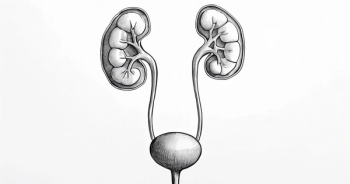
Higher AFM24 Exposure Boosts Response in Advanced NSCLC: AACR Data
A post hoc analysis shows significantly improved ORR and PFS in advanced NSCLC with higher AFM24 exposure, supporting optimized dosing strategies.
New data presented at the
The post hoc exposure-response analysis of 72 patients with NSCLC revealed significantly higher objective response rates (ORR), disease control rates (DCR), and prolonged progression-free survival (mPFS) in patients who had higher AFM24 exposure. Notably, increased exposure was not associated with a greater incidence of severe adverse events, supporting the feasibility of dose optimization strategies.
The analysis, based on trough levels of AFM24 over time, categorized patients into high and low exposure groups using the median exposure as a cutoff. The ORR in the high-exposure group was 33.3% compared with 5.6% in the low-exposure group (P =.0059). Similarly, the DCR was higher in the high-exposure group at 83.3% vs 58.3% in the low-exposure group (P =.0367). The mPFS was also longer in the high-exposure group, reaching 7.33 months compared with 2.86 months in the low-exposure group.
While overall survival (OS) data in the high-exposure group remain immature, the low-exposure group had a median OS of 13 months, suggesting a potential for improved long-term survival with optimized dosing.
Further bolstering these findings, a quartile analysis showed a clear dose-response relationship, with the ORR increasing from 0% in the lowest quartile of exposure to 50% in the highest quartile. A subgroup analysis of 55 patients treated with a combination of AFM24 and atezolizumab (Tecentriq) yielded consistent results, demonstrating a 37.04% ORR in the high-exposure group vs 7.14% in the low-exposure group.
“Advanced NSCLC is a devastating disease and remains an area of high unmet need,” stated Andreas Harstrick, MD, chief medical officer of Affimed, in a press release. “These findings strengthen our clinical rationale for dose optimization and highlight the potential of AFM24—particularly in combination with atezolizumab—as a novel, chemotherapy-free, immunotherapy-based treatment approach. Importantly, the data suggest that achieving higher drug exposure early in treatment may prevent rapid disease progression.”
Based on pharmacokinetic modeling, Affimed has determined that a 720 mg weekly dose of AFM24, previously established as safe in earlier trials, will achieve target exposure levels corresponding to the high-exposure group by the second week of treatment. Consequently, Affimed will incorporate this 720 mg dose in future AFM24 clinical studies to optimize clinical benefit and mitigate the risk of early disease progression observed in patients with lower drug exposure.
About AFM24
AFM24 is a tetravalent, bispecific innate cell engager designed to harness the power of the innate immune system to combat cancer.2 It binds to CD16A on innate immune cells, such as natural killer cells and macrophages, and to the epidermal growth factor receptor (EGFR), a protein frequently overexpressed on solid tumors. This dual binding mechanism facilitates the killing of cancer cells through antibody-dependent cellular cytotoxicity and antibody-dependent cellular phagocytosis. Developed using Affimed’s ROCK® platform, AFM24 represents a unique immunotherapy approach that leverages EGFR as a binding site to direct innate immune cells to tumor cells.
“These data provide compelling evidence that higher exposure may translate to better outcomes in patients with advanced NSCLC,” added Harstrick in the press release.1 “With dose optimization in hand, we are positioned to advance AFM24 in its potential to deliver durable benefit in a difficult-to-treat patient population.”
The findings underscore the critical role of drug exposure in the efficacy of AFM24 in advanced NSCLC and provide a strong rationale for the adoption of a 720 mg weekly dose in future clinical trials.









































